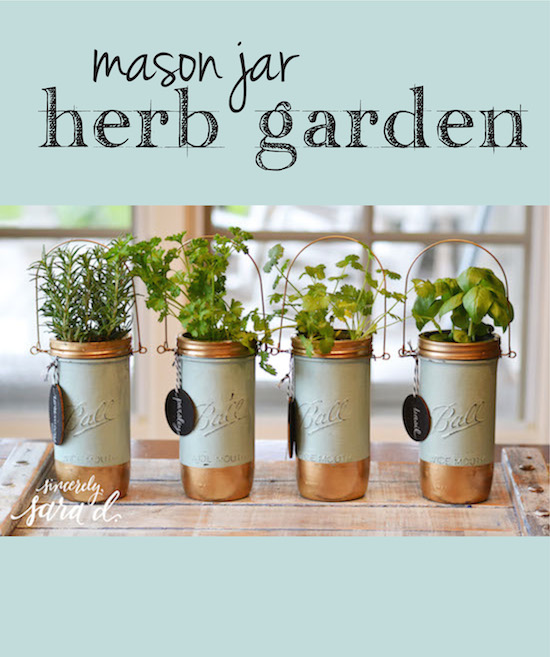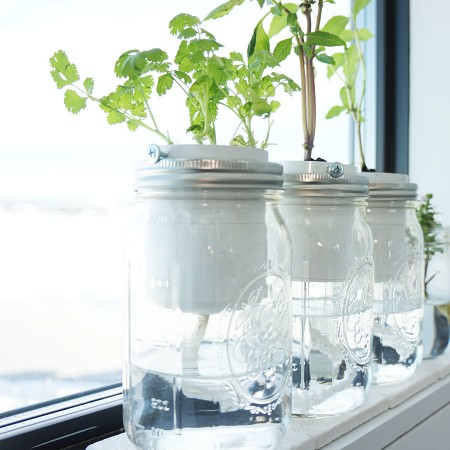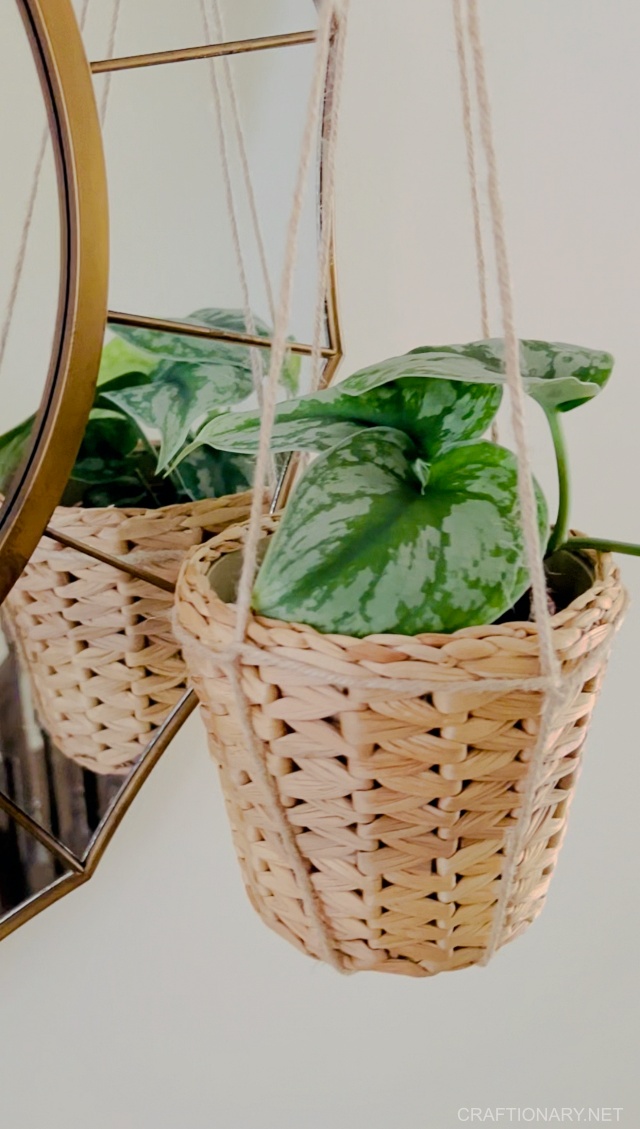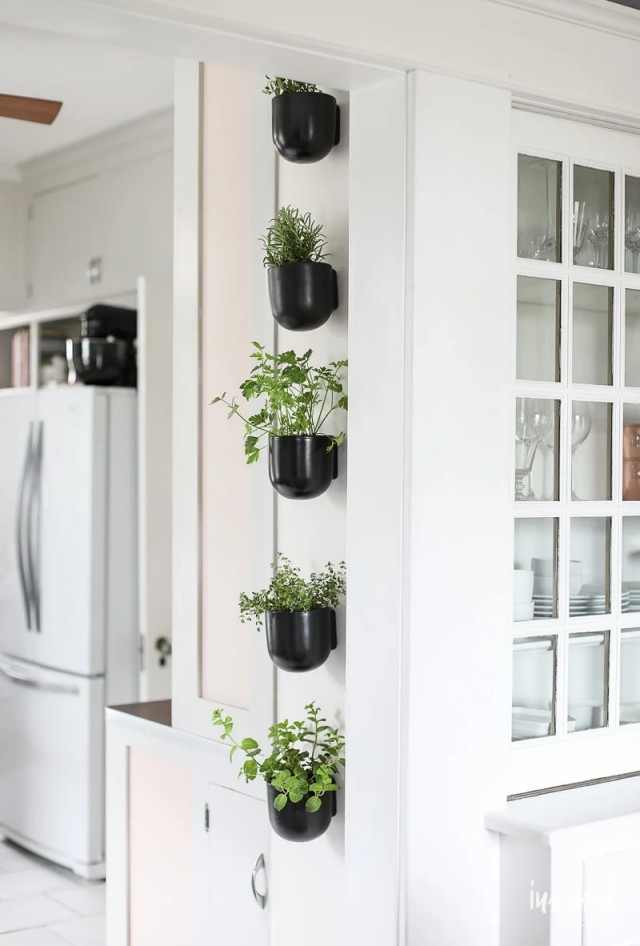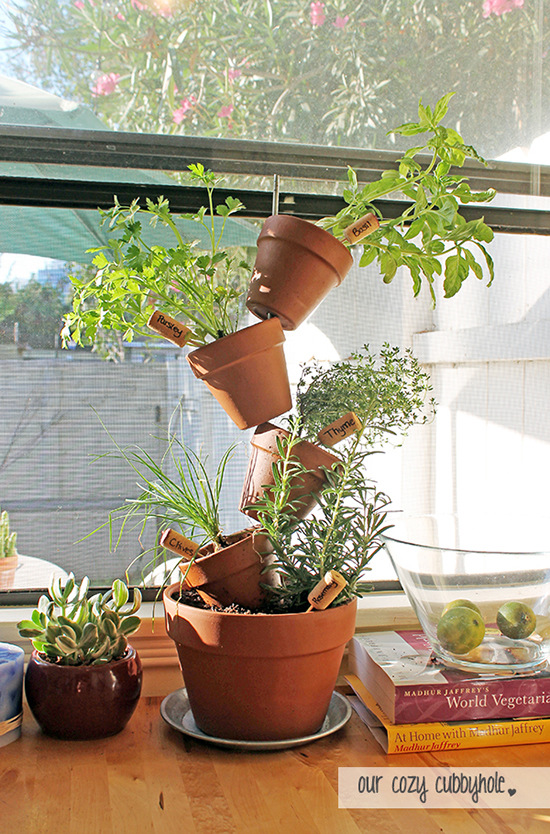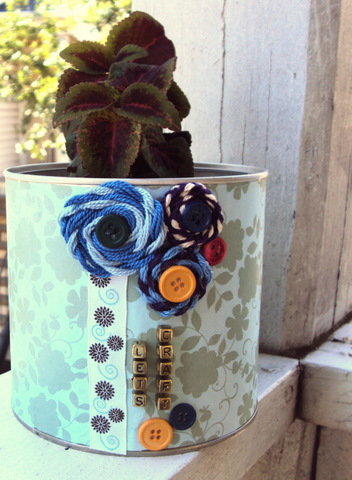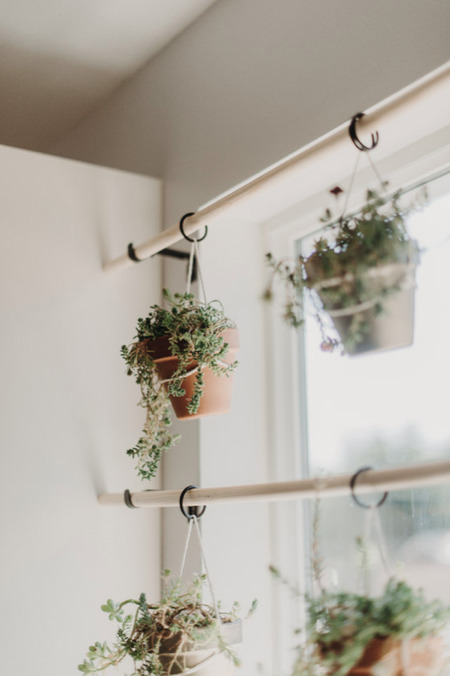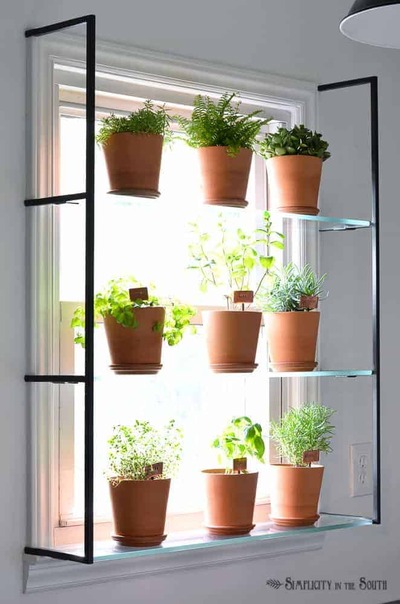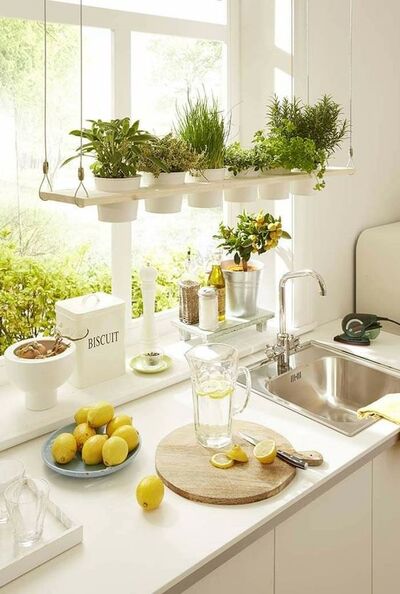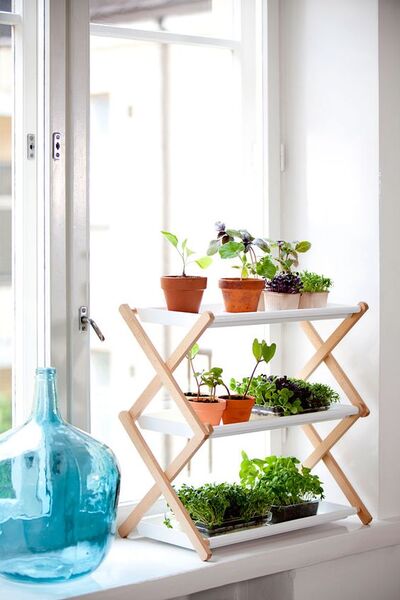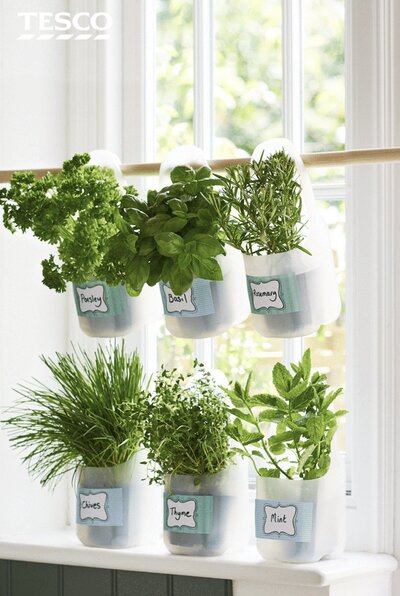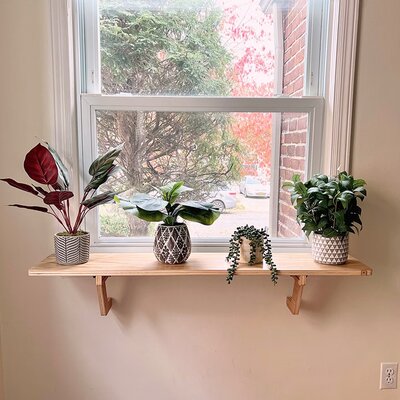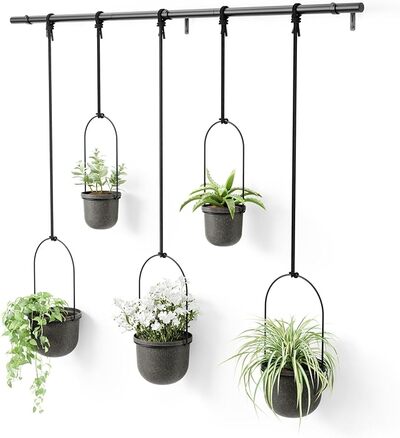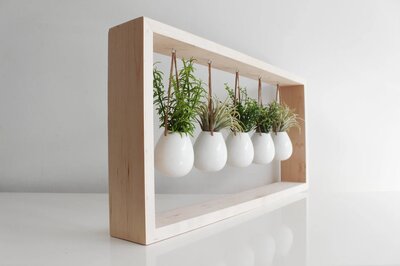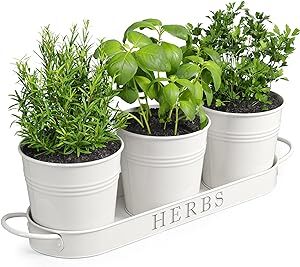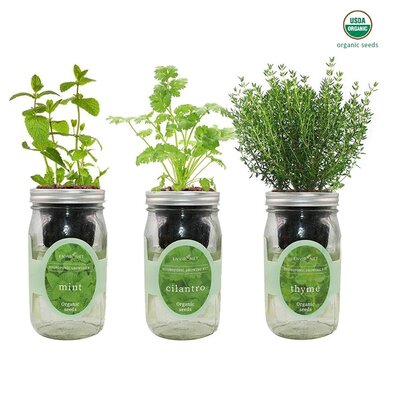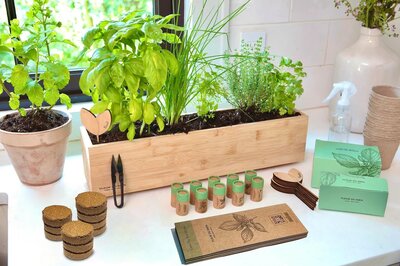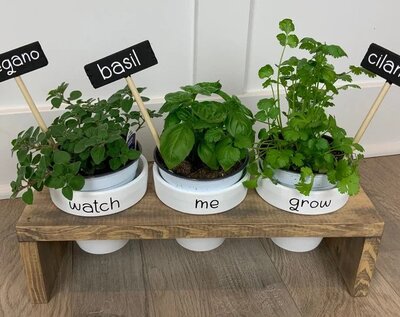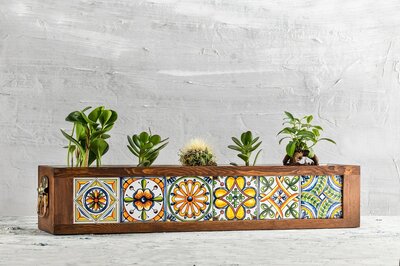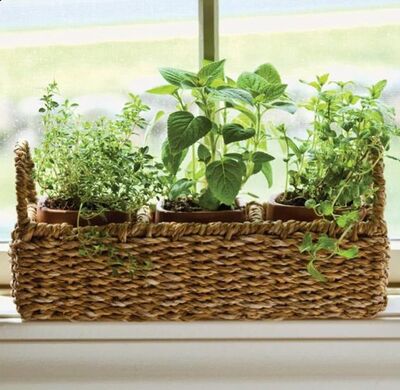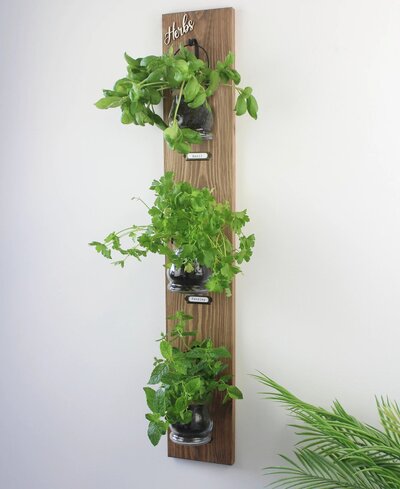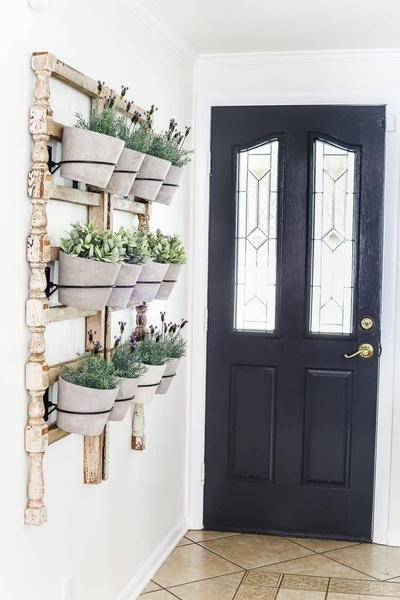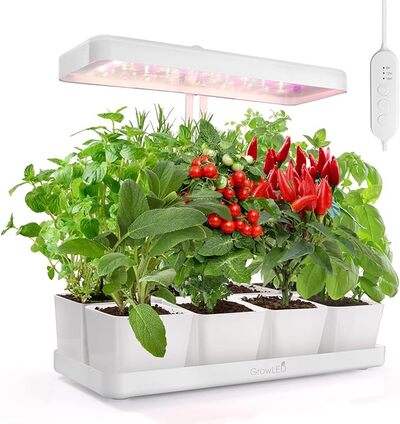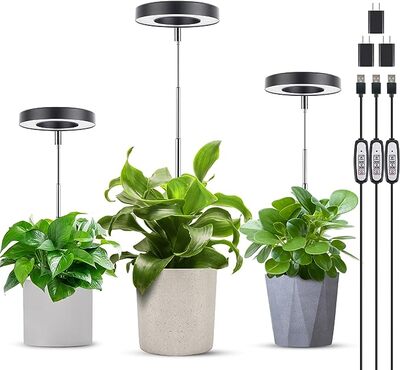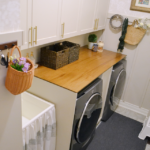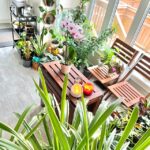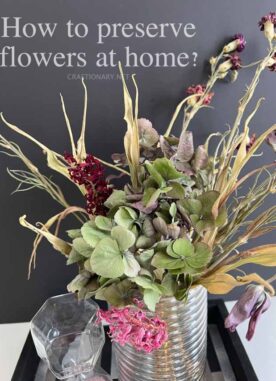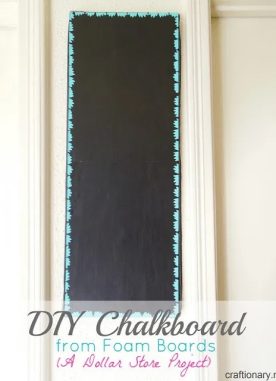This post may contain affiliate links. Please see our full Disclosure Policy for details.
Learn how to grow a successfully planted herb garden from seeds indoors in your windowsill in the kitchen with creative ideas for home.
Herbs have been used for their culinary, medicinal, and cosmetic properties for thousands of years. When compared to dried herbs, fresh herbs are more affordable to grow and harvest, packed with nutrients, and have an improved taste. So, you can add a bit of freshness to your windowsill with an herb garden, regardless of whether you live in an apartment, a house, or anywhere in between.
A sunny windowsill is all you need for growing a perfect home kitchen garden. Ideally 6-7 hours of sun so a south facing window but an east facing window works for me as well. If you give them the proper attention, many of your favorite herbs—like parsley, basil, and thyme—will grow inside. Keep the harvest season going all winter by topping your favorite soups, vegetables, roasts, and more with an endless supply of picked leaves.
In this blog, you will get some windowsill herb garden ideas. Furthermore, get the complete guidelines for starting, maintaining, and using an indoor herb planter for gardens with some indoor plants. Skip the weeding and go to harvesting if you have enough water and sunshine.
Windowsill Herb Garden Ideas
Windowsill herb garden is an incredible way to add some flavor to your food and enhance the beauty of your home.
Some suggestions for a herb garden infront of a window include adding shelves, installing a hanging shelf, placing a flower box or planters at the window base and using hooks to hang planters on the sides of the window or the ceiling.
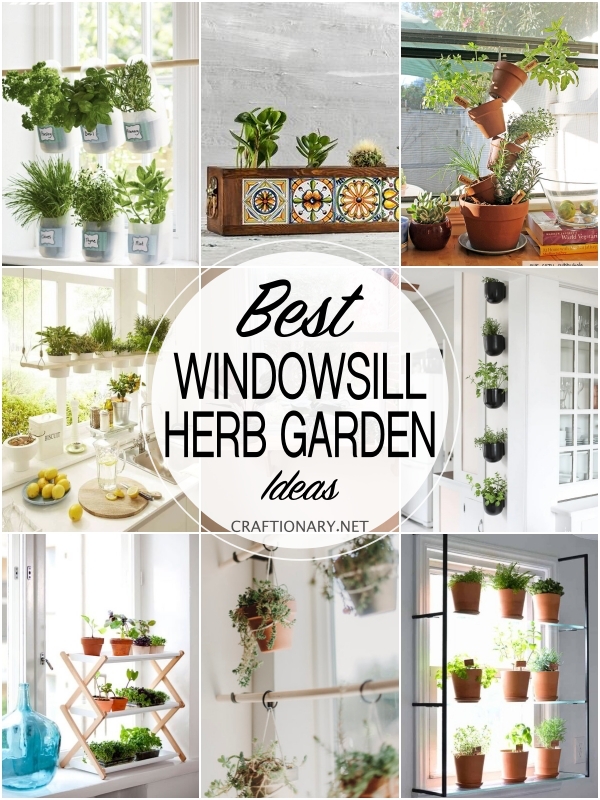
Windowsill Herb Gardens
DIY Windowsill Herb Gardens
1) Use mason jars to grow herbs. Here are some Mason Jar Herb Planters from Craftionary.
2) DIY Hydroponic Herb Garden with clamps and two different size jars. Find this and more self-watering planter ideas to grow herbs at Craftionary. This idea is perfect for beginners and busy individuals who are not sure how much water their herbs need.
3) Hang any herb planter in your window with this simple DIY macrame plant holder.
4) Vertical Herb Garden by drilling hole in planter and using command hooks, and plant wall ideas.
5) Have small space besides the window? No problem! Make a vertical herb planter with pots and rod.
6) Decorate DIY Tin Can planter and grow herbs in it.
7) Here’s a small herb garden DIY for an apartment. Use sturdy wood poles or even curtain rods to hang pots like this Ceramic pots windowsill herb garden from Brooke summers photography.
8) Window herb garden plant shelf
9) Floating shelf herb plant with wood plank and steel wire.
10) Three-tier plant shelf in the window – unknown source.
Similar bamboo cross-shelf
11) Plastic Bottle kitchen herb planters
Beautiful Countertop Windowsill Herb Garden
12) Add a shelf underneath the window to create a herb garden.
13) Modern Hanging Herb Planters
14) Frame mount hanging herb garden
15) Herb garden planter set with tray
16) Hydroponic Herb Garden Kit
17) Herb Garden Starter Kit with planter, herb seed packs and biodegradable growing pots to get you started.
19) Beautiful Mexican tiles herb box
20) Rattan Basket windowsill Planter
Vertical Herb Garden
21) Handmade Plant Windowsill Shelf is your three-tier no-drill solution.
Medicinal Herb Garden
A medicinal herb garden is a growing space where herbs are grown for medicinal purposes. It provides natural remedies for many medical conditions. The most used herbs are calendula, ginger, turmeric, chamomile, lavender, Peppermint and echinacea. Medicinal herb gardens promote a healthy environment, improve biodiversity, and offer habitats for beneficial insects. You can plant them in terracotta pots, planters, and jars.
23) Here’s an idea for upcycling banisters to make an herb garden on the wall beside the windowsill.
24) Windowsill herb garden stand for large windows.
Indoor herb garden with grow light
Light is crucial for proper growth of herbs. Herbs need 6 to 8 hours sunlight. In some seasons it is not possible so you can use grow lights. Grow lights help the plants to grow. These provide the light spectrum same as sunlight. There are two types of grow lights fluorescent grow light and led grow lights.
- The T5 and T8 fluorescent grow lights are very common for indoor herb gardens because of their efficiency and low cost, but they are comparatively expensive.
- LED grow lights come in several sizes and ranges suitable for different herb types and are safe, long-lasting, and energy-efficient for indoor herb gardens.
25) Grow light herb garden planter
26) Individual grow light stake for herb planters.
A windowsill herb idea is not an effective method it also makes your space look good. You can grow your herbs indoors whether you live in a big house or a small apartment. If you choose herb garden stand, planter boxes, containers, magnetic planter, hanging planter, vertical planter hydroponic, pots, mason jar, or teacups, all these windowsill herb garden ideas suit each style and place. So, gather all the supplies you need and start planting your favorite herbs to enhance the flavor of your food and beauty of your home.
FAQ’s
How do you set up a windowsill herb garden?
You can set up your windowsill herb garden by following the steps below.
Choose the right Window and container: To avoid spindly stressed plants and diminished flavor. Choose a windowsill that receives at least 6 hours of sunlight. A south facing window is ideal, however, east-west windows can work as well.
Choose the right herb: All the herbs cannot grow indoors. The most suitable beginner herbs to grow indoors are parsley, thyme, basil, rosemary, chives, and mint.
Materials and tools: To set up a windowsill herbs garden you need tin cans, spray paints, chalkboard labels, small herb plants or seed packets, potting soil, and water.
Choose your planter: There are various types of planters you can set up for herb garden windowsill. It includes individual pots, a trio of white metal herb pots with trays, convertible herb pot sets, wooden window boxes and self-watering planters.
Ensure proper drainage: Choose a container with drainage holes. When there is excessive water in the saucer, drain it.
Steps to plant the herbs: First, add a layer of potting mix to the bottom of the planter. Then, remove the herb plant from the original pot, releasing the roots. Afterwards, cover it with potting mix shaping it around the plant and leaving space for watering. Immediately, add some water to it till the water escapes from the drainage holes. Remove the excess of water.
Harvesting windowsill herbs: To foster complete bushy growth and harvest them. Trim the herbs for flourishing growth and use fresh herbs.
Water your herbs: Water your herbs once a week or when the top 1 inches of soil gets dry. Moist the soil completely till the water escapes the drainage hole for proper watering.
How to plant your herbs from a plant?
You need a fully-grown herb plant to grow your herbs from a plant, scissors, water, and a pot with mixed soil.
- Take a green stem from your grown plant. You can also try stems of mint, coriander and other herbs from your local grocery store.
- Cut the plant a few inches below the leaf node (a point where the leaves rise from the stem). It should be around three or four inches long.
- After removing the bottom leaves place your cutting in water.
- Then, place it on a windowsill in the sunlight. To promote growth, change the water every several days. It might take a couple of weeks, but you will notice roots growing at the bottom of the cutting.
- Herbs are all set to plant once they begin to form roots. Fill your pot with compost, dig a hole with your finger, place the cutting and press the soil down.
- Water the cutting and witness its growth.
How to plant your herbs from seeds?
Select the right seed: Pick organic and non-GMO herb seeds. These are suitable for your environment and space. The most common choices are cilantro, parsley, basil, and thyme.
Prepare the soil: Use a proper herb soil mix that includes the material or vermiculite for ideal It also has a neutral pH to produce a space rich in all nutrients. It is crucial for effective herb planting.
Planting the seed: Plant herbs together using little seeds that do not need deep planting. Spread the seeds over the surface of soil and cover with a light-covering soil.
Provide enough light and warmth: Herb seeds need plenty of sunlight as well as a warm and stable environment for ideal growth. Plant seeds in lit areas or if necessary, use cultivation lights.
Watering Techniques: To prevent overwatering and stressing out young plants maintain the soil moisture level using a spray bottle and a regular watering schedule.
Thinning and Transplanting: Thin the herbs by pulling out lesser seedlings and letting stronger ones grow once they have sprouted and produced a few leaves. To ensure optimal growth, transfer them into larger pots or gardens as they mature.
Monitoring and Harvesting: Plants need regular watering, occasional organic fertilization, and pest monitoring. Herbs grow best when harvested early in the morning, as their fragrances are strong at that time.
Windowsill garden care
Herbs grown on windowsills are generally easy to care for but there are a few things to remember to ensure they grow well.
Light: Herbs need 6 to 8 hours of sunlight a day. They work best in East facing windows for me. Otherwise, West, or South-facing window is also suitable. Grow lights are the best option for people who do not have enough window light.
Soil: Use a premium potting mix that retains moisture and drains well for herbs. To avoid root rot; add perlite to the soil.
Water: Add water to your herb according to its type but do not water it again until the top inch of soil has dried. Keep in a more humid environment.
Fertilizer: Mixed the organic fertilizer as directed on the Avoid it in November, December, and January, and use it after replanting or February growth.
Temperature: Herbs prefer higher temperatures (55-70°F). Yet, they are adaptable to room temperature. Place your windowsill herbs together to add more humidity.
How to harvest?
When the herb is 4 to 6 inches tall, harvest it so there are enough leaves for its growth in the future. You can cut the stems from the top or outside with sharp pruning scissors to promote new growth. You can propagate herb cuttings in water.
How to prune for flourishing growth?
It can be tricky to decide when to prune outdoor plants, but it is easier to do so with herbs. You can prune most of your herbs whenever you want. But fast-growing herbs such as basil, mint, and dill need regular pruning. In early spring, when growth is beginning, trim herbs. Winter pruning minimizes growth because of the chilly temperatures and shortened days. Herbs become a desirable fresh plant material when they grow indoors.
How and when to repot herbs?
You must follow these tips for repotting herbs:
- When the soil is loose and dry, pull out rotten or dead roots and shake off the plant to release the roots from old soil.
- Once you have cleaned it choose a larger pot and fill it with potting soil. Instead of planting deeper put the plant in the center about 2 inches inside the soil only.
- Press the plant gently but the soil firmly to set it in place.
- Water the plant till the water escapes through drainage holes.
- Add more soil in the planter if it sinks in too much after watering.
Consider these things to know if your herb needs repotting:
- It is pale, unsteady and is no longer growing.
- It has roots that grow out of drainage holes and falls upside down.
- The soil remains dry and the water flows through the drainage holes.
- If you choose not to change the pot, then change the soil. It takes one month for the plant to recover after repotting.
- After repotting place the plant in proper sunlight and water it properly. Ideally in the same spot where it was to avoid shock to the herb.
- The most suitable time to repot the herbs is the spring season.
Common problems with herbs and tips to avoid them
Lack of water and light often leads to problems for herbs. If there is not enough sunlight, use artificial grow lights. Choosing a suitable container aid in avoiding overwatering. You can resolve both the issues by changing the growing conditions.
Also remember herbs love humid environments, therefore, think about investing in a warm water humidifier if the air in your home is too dry. Mist your herbs on alternate days to keep them happy.
Written by: Alveena Nazir
